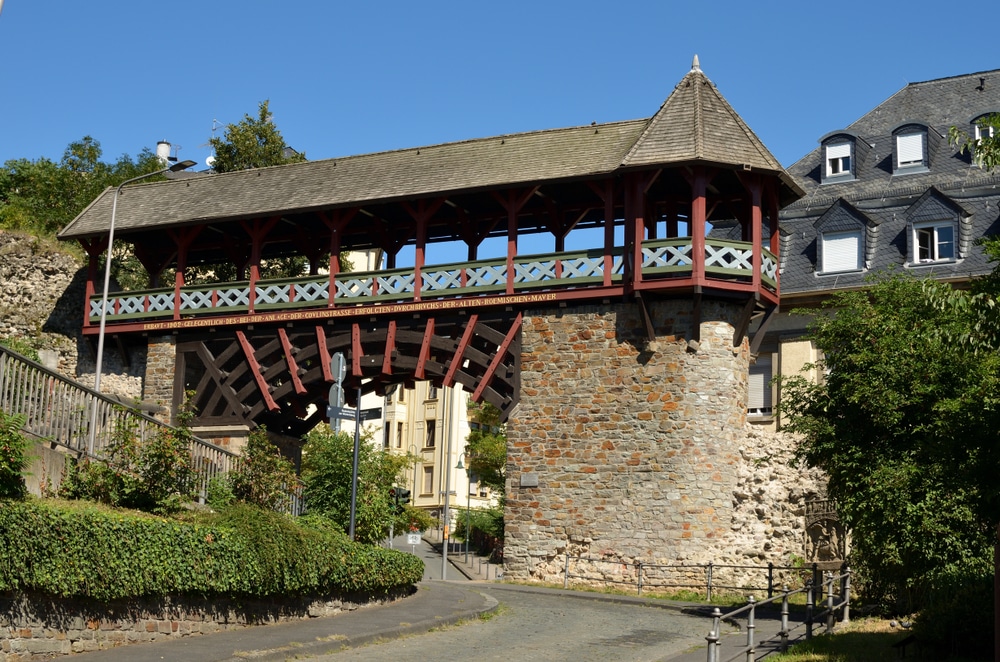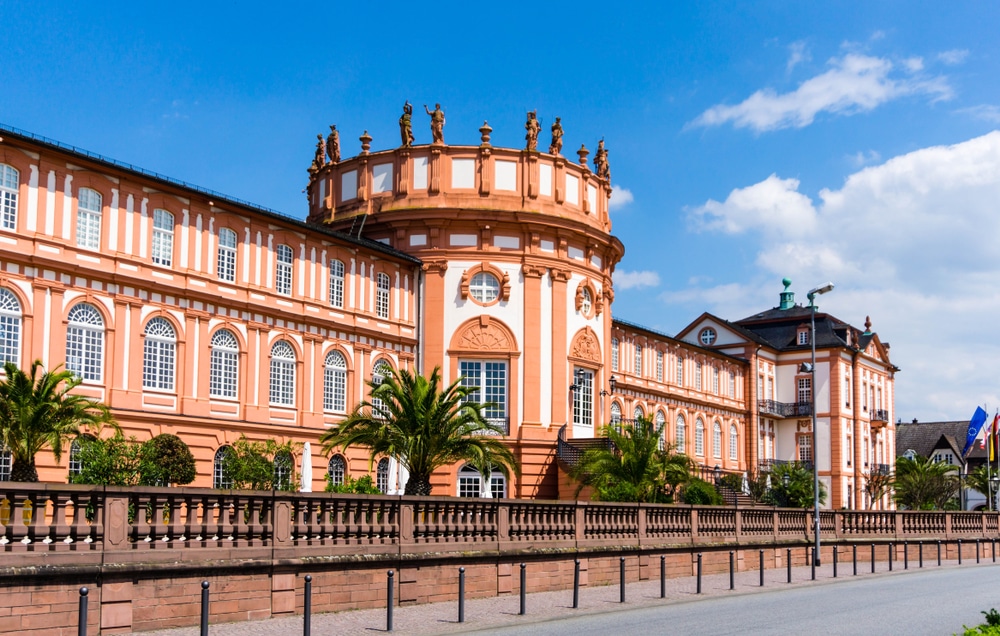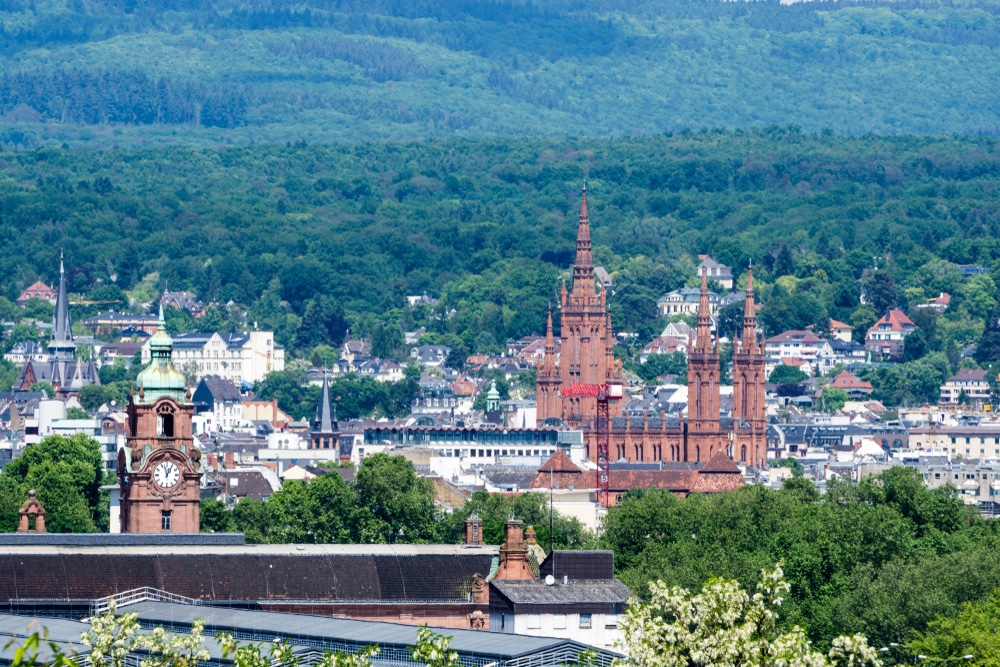The Roman monument, which according to the ancient historian Emil Ritterling from Wiesbaden was erected at the time of Emperor Valentinian, but according to scientific chronology can now be dated to around 130 years before Emperor Valentinian, is located in the city centre of Wiesbaden.
The Heidenmauer runs from the Schulberg to the street "Am Römertor" and is both the oldest preserved structure in Wiesbaden and the best known part of the ancient Roman settlement Acquae Mattiacorum.
Features
Historians have long puzzled over the purpose of the Heidenmauer. It was thought to have been built as part of a defensive structure. However, modern research now suggests that the wall was built as a Roman water conduit bridge.
For what reason the wall simply breaks off at both ends is still not clear. It is assumed that the ends were protected by ditches. Another assumption is the lack of further fortifications, as they simply did not survive the passage of time. It could also be that the wall was simply never fully completed.
Remains
Of the once 520-metre-long wall, only 80 metres now remain, rising up to 10 metres in height.
Originally, three towers adorned the Heidenmauer: the square Stümpert, the Tessenturm and the semicircular Heidenturm on the Schulberg above the Römertor. Unfortunately, the latter is the only surviving and still visible tower of the wall.
The Roman Gate
When the Heidenmauer had to be breached in 1903 for the construction of the Coulinstraße, it was supplemented by the most photographed structure of the Hessian state capital today: the Römertor.
The city builder and architect of the time, Felix Genzmer, built today's cultural monument consisting of a viaduct with main and side gates, as well as a staircase, towers and a roofed walkway in the style of Trajan's Bridge - a Roman arched bridge construction in wooden design that led across the Danube in 103 AD.
Below the Roman Gate there is currently an open-air museum.



